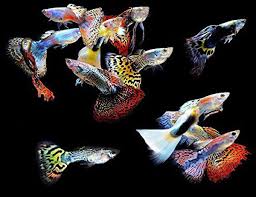Lantern festivals are vibrant cultural celebrations held in various countries across Asia and beyond, where the night sky glows with hundreds, sometimes thousands, of colorful lanterns. These festivals not only light up communities but also symbolize hope, prosperity, and unity. Integral to these celebrations are the special foods that accompany the festival, reflecting rich cultural heritage and communal joy.
This article explores the origins and significance of lantern festivals, highlights popular festivals worldwide, and delves into the traditional and symbolic foods that accompany these luminous occasions. Whether you are a curious traveler, a cultural enthusiast, or someone wanting to understand the culinary traditions behind these magical nights, this article offers an in-depth look.
The Origins and Significance of Lantern Festivals
Lantern festivals have roots that stretch back thousands of years, primarily in East Asian cultures. The tradition of lighting lanterns is deeply symbolic:
- Light as a symbol: Lanterns represent illumination, guiding lost spirits, bringing hope, and driving away darkness and evil.
- Reuniting families: Lantern festivals often mark the end of significant celebrations, such as Lunar New Year, encouraging families to gather.
- Prayer and wishes: People write wishes on lanterns or release floating lanterns to seek blessings.
- Community bonding: Festivals create shared experiences, strengthening social ties.
One of the most famous lantern festivals is the Chinese Lantern Festival (Yuan Xiao Jie), celebrated on the 15th day of the first lunar month, marking the end of the Lunar New Year. Other notable festivals include the Mid-Autumn Festival lantern celebrations, Thailand’s Yi Peng Lantern Festival, and Japan’s Toro Nagashi.
Popular Lantern Festivals Around the World
1. Chinese Lantern Festival (Yuan Xiao Jie)
The Lantern Festival in China dates back over 2,000 years and signals the end of Lunar New Year festivities. It features:
- Lantern displays shaped like animals, flowers, and legendary figures.
- Lion dances, fireworks, and riddles written on lanterns.
- Traditional foods like tangyuan (sweet glutinous rice balls).
2. Mid-Autumn Festival Lanterns
Celebrated primarily in China, Vietnam, and other East Asian countries, this festival honors the full moon and harvest. Children parade with paper lanterns shaped like stars, fish, or lotus flowers.
3. Yi Peng Festival, Thailand
In Northern Thailand, especially Chiang Mai, thousands of paper lanterns (khom loi) are released into the sky to symbolize letting go of misfortune and making wishes for the future.
4. Toro Nagashi, Japan
In this somber and beautiful festival, paper lanterns are floated down rivers to honor ancestors’ spirits and pray for peace.
Traditional Foods of Lantern Festivals
Food is a core element of any celebration, and lantern festivals are no exception. The foods often hold symbolic meanings tied to the themes of light, unity, and luck.
Chinese Lantern Festival Foods
Tangyuan — The Sweet Glutinous Rice Balls
Perhaps the most iconic food of the Chinese Lantern Festival is tangyuan (汤圆), small round balls made from glutinous rice flour and filled with sweet fillings such as black sesame paste, red bean paste, or peanut butter.
- Symbolism: Their round shape represents unity, family reunion, and completeness.
- Cultural significance: Eating tangyuan symbolizes family members coming together in harmony.
- Preparation: Tangyuan can be boiled and served in a sweet ginger or osmanthus flower syrup.
Yuanxiao
In some regions, yuanxiao refers to a slightly different preparation of rice balls with dry fillings, steamed or fried instead of boiled.
Lantern-Shaped Pastries and Rice Cakes
During the festival, special pastries and cakes in lantern shapes or decorated with lantern motifs are prepared, symbolizing brightness and joy.
Mid-Autumn Festival Treats
Mooncakes
Mooncakes are the quintessential Mid-Autumn Festival delicacy:
- Appearance: Round, dense pastries filled with lotus seed paste, red bean, or salted egg yolk.
- Symbolism: Their round shape symbolizes completeness and reunion.
- Varieties: There are many regional varieties, including Cantonese, Suzhou-style (savory), and snow skin mooncakes.
Pomelo and Seasonal Fruits
Pomelo, a citrus fruit, is also commonly eaten. Its round shape and fragrant aroma symbolize family unity and good fortune.
Thai Lantern Festival Foods
Khanom Buang (Thai Crispy Pancakes)
These are small, crispy pancakes filled with coconut cream and sweet or savory toppings, enjoyed as street snacks during the Yi Peng festival.
Khao Lam (Sticky Rice in Bamboo)
Sticky rice cooked with coconut milk inside bamboo tubes is a traditional treat.
Grilled Meats and Tropical Fruits
Celebrations often feature grilled chicken, pork skewers, and tropical fruits like mango and pineapple, enjoyed in communal gatherings under lantern-lit skies.
Vietnamese Lantern Festival Foods
Vietnamese children carry colorful lanterns during the Mid-Autumn Festival (Tết Trung Thu), celebrating with:
Bánh Trung Thu (Mooncakes)
Similar to Chinese mooncakes but often sweeter and with local flavors like mung bean paste and coconut.
Sticky Rice Cakes (Bánh Dày)
Round sticky rice cakes symbolize purity and the moon, eaten with sweet or savory accompaniments.
The Symbolism Behind Lantern Festival Foods
Each food served during lantern festivals carries deep meanings connected to the culture’s values and hopes:
| Food Item | Symbolism | Cultural Context |
|---|---|---|
| Tangyuan (Glutinous rice balls) | Family unity, completeness | Chinese Lantern Festival |
| Mooncakes | Reunion, harmony, fullness | Mid-Autumn Festival |
| Pomelo | Prosperity, good luck | Mid-Autumn Festival |
| Khanom Buang | Sweetness and joy | Thai Yi Peng Festival |
| Sticky rice (various forms) | Purity, tradition, nourishment | Multiple Asian festivals |
Modern Adaptations and Global Influence
With globalization and multicultural exchanges, lantern festivals and their foods have gained worldwide popularity:
- Lantern festivals are held in cities globally, from San Francisco to London.
- Fusion foods inspired by traditional festival treats are created.
- Vegan and health-conscious versions of traditional foods are emerging.
- Lantern-themed food festivals and markets add to the festive atmosphere.
How to Experience Lantern Festival Foods at Home
If you cannot attend a lantern festival in person, you can still enjoy the atmosphere and tastes at home by:
- Preparing traditional foods like tangyuan or mooncakes with family.
- Lighting homemade paper lanterns to decorate your dining area.
- Sharing stories about the cultural meanings of these foods and lanterns.
- Hosting a small gathering or virtual party to celebrate the festival spirit.
Conclusion: More than Light — A Feast of Culture and Flavor
Lantern festivals are much more than dazzling lights floating in the night sky. They are living traditions filled with meaning, community, and joy. The accompanying foods enrich these experiences by connecting people through shared flavors, stories, and hopes.
By understanding the deep symbolism and savoring the traditional delicacies, we can better appreciate these luminous celebrations that continue to illuminate hearts and tables worldwide.










